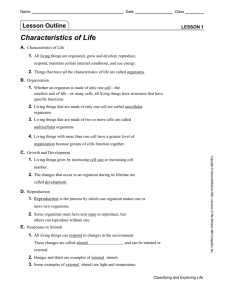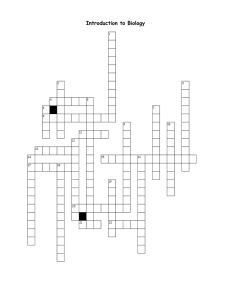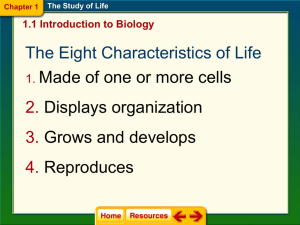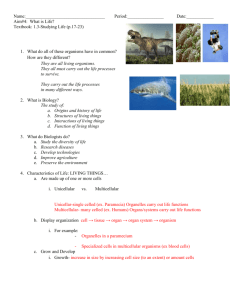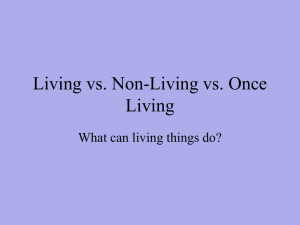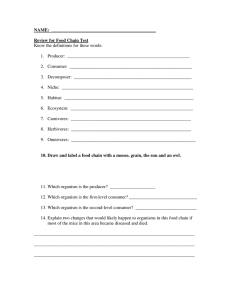10c.rc.characteristics-of-living
advertisement
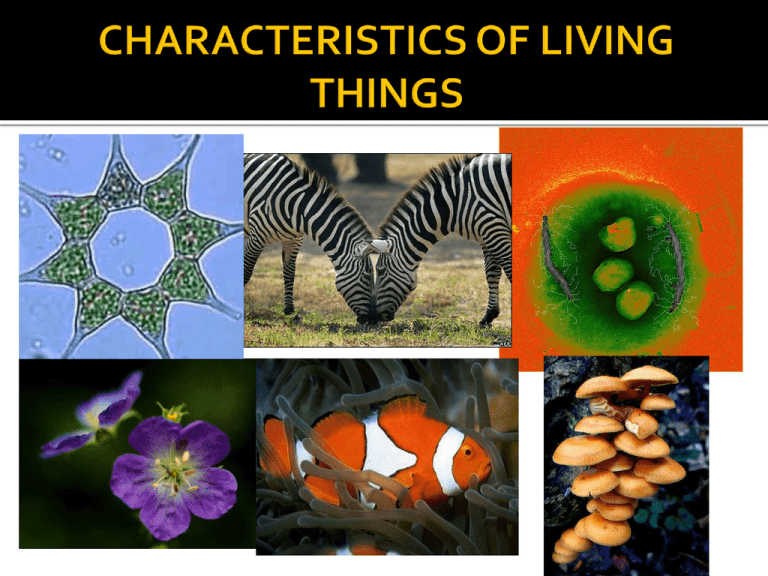
1. Are made up of cells and organisms can be a. Unicellular – one cell; single cell b. Multicellular – many-celled. A. Asexual – new organism has a single parent. B. Sexual – two cells from different organisms. unite to produce 1st cell of new organism. (most common form) 3. Is based on a universal genetic code (DNA) that determines inherited characteristics of every organism on Earth 4. Grow and develop at some point increase in size organisms change (develop) over the course of their lifetime 5. Obtain and use materials and energy need these to just stay alive. need constant supply of energy and metabolism. Definition: Metabolism – combination of all chemical reactions in the body that builds or breaks down materials as it carries out its life function. 6. Respond to their environment. Organisms detect and respond to stimuli in their environment. Definition: stimuli – a signal to which an organism responds Can be external or internal. 7. Maintain a stable internal environment. Process to do this is known as homeostasis. Often involves internal feedback mechanisms. 8. Taken as a group organisms change over time; these changes are small at any one time but over long periods of time can be significant.



